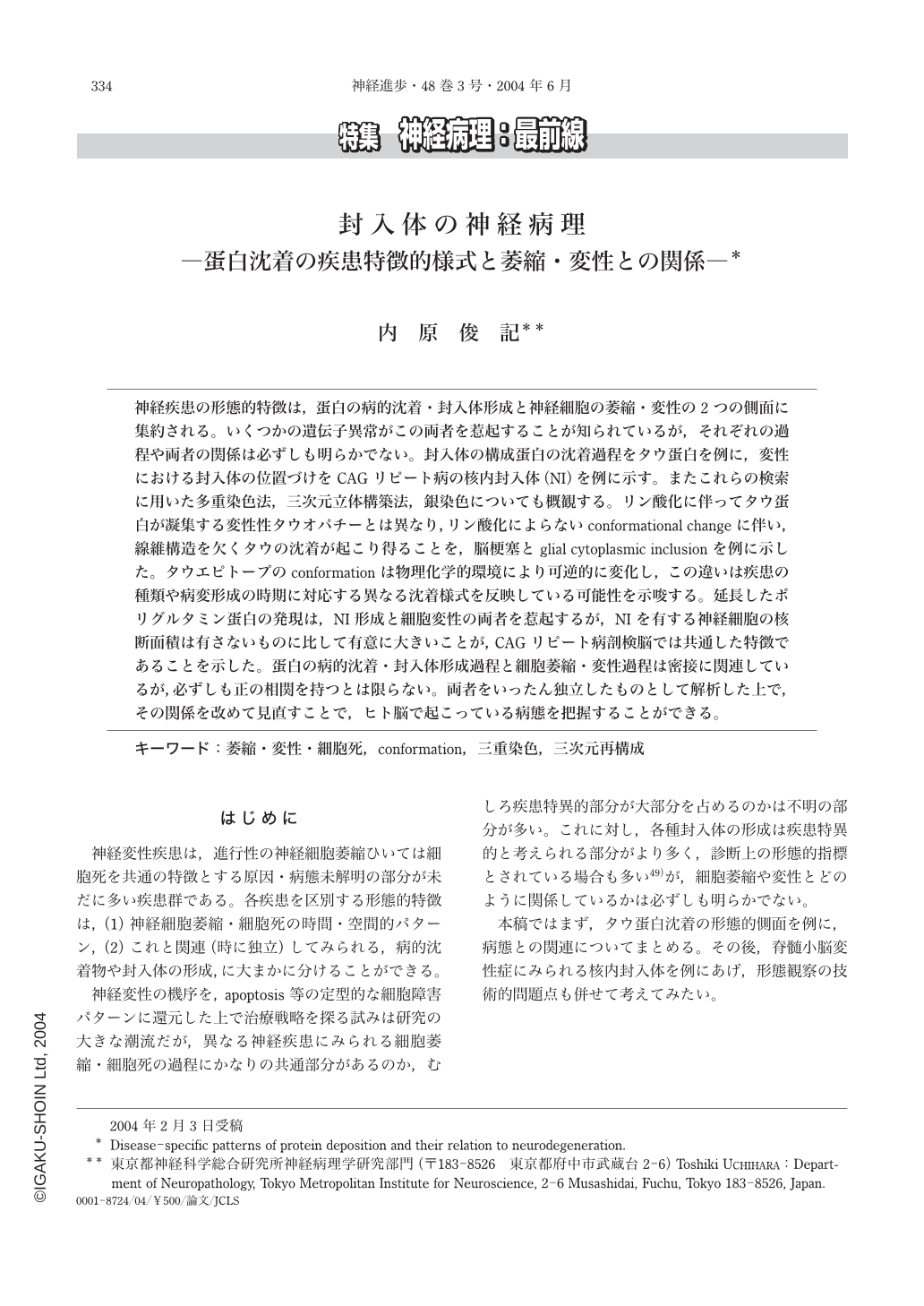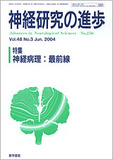Japanese
English
- 有料閲覧
- Abstract 文献概要
- 1ページ目 Look Inside
神経疾患の形態的特徴は,蛋白の病的沈着・封入体形成と神経細胞の萎縮・変性の2つの側面に集約される。いくつかの遺伝子異常がこの両者を惹起することが知られているが,それぞれの過程や両者の関係は必ずしも明らかでない。封入体の構成蛋白の沈着過程をタウ蛋白を例に,変性における封入体の位置づけをCAGリピート病の核内封入体(NI)を例に示す。またこれらの検索に用いた多重染色法,三次元立体構築法,銀染色についても概観する。リン酸化に伴ってタウ蛋白が凝集する変性性タウオパチーとは異なり,リン酸化によらないconformational changeに伴い,線維構造を欠くタウの沈着が起こり得ることを,脳梗塞とglial cytoplasmic inclusionを例に示した。タウエピトープのconformationは物理化学的環境により可逆的に変化し,この違いは疾患の種類や病変形成の時期に対応する異なる沈着様式を反映している可能性を示唆する。延長したポリグルタミン蛋白の発現は,NI形成と細胞変性の両者を惹起するが,NIを有する神経細胞の核断面積は有さないものに比して有意に大きいことが,CAGリピート病剖検脳では共通した特徴であることを示した。蛋白の病的沈着・封入体形成過程と細胞萎縮・変性過程は密接に関連しているが,必ずしも正の相関を持つとは限らない。両者をいったん独立したものとして解析した上で,その関係を改めて見直すことで,ヒト脳で起こっている病態を把握することができる。
Possible relevance of protein deposits, characteristic for some neurodegenerative disorders, were dissected into 1)how the protein is deposited to form inclusions and 2)how neurodegeneration is related to the deposits. Some genetic abnormalities linked to neurodegenerative disorder, for example pathological mutations of tau gene or pathological expansion of CAG repeat, result in these two aspects. Also summarized are technical challenges to realize enhanced multilabeling, three-dimensional reconstruction and how to interpret silver-staining methods. Deposition of protein was investigated on tau in ischemic foci or in glial cytoplasmic inclusions in multiple system atrophy that was found, in both conditions, detectable exclusively with tau2 antibody, whose epitope is not dependent on phosphorylation. This tau2 immunoreactivity was abolished in the presence of detergent(TritonX-100)but restored after washing, suggesting that conformational state of tau2 epitope is dependent on physical and chemical environment and reversible. Difference in the conformational state may distinguish different diseases or different stages of a disease. How neurodegeneration is related to deposits was investigated on CAG repeat disorders relevant to both formation of nuclear inclusions(NI)and neurodegeneration. Cross sectional area of pontine neurons with NI was found larger than that of neurons without NI in a series of CAG repeat disorders and neuronal intranuclear hyaline inclusion disease. Although protein deposition and neurodegeneration is tightly linked to each other, their correlation is not necessarily positive. Independent analyses of these two aspects may clarify their relationship to understand what is going on in human brains with neurodegenerative disorders.

Copyright © 2004, Igaku-Shoin Ltd. All rights reserved.


